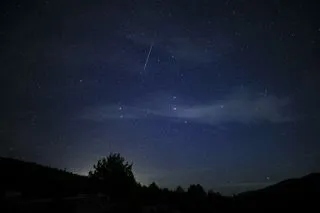NASA’s monthly roundup of the best astronomical events and celestial objects to observe in the June 2023 sky is here. The space agency has compiled a fascinating list of what to look out for in the coming weeks, offering astronomy enthusiasts and casual stargazers alike an exciting opportunity to explore the wonders of the universe.
One of the most intriguing events to look out for is the pairing of Mars and the Beehive Cluster on Thursday and Friday. Mars, the rust-colored disk, will be visible through binoculars or a small telescope, surrounded by a sparkle of faint stars. The Beehive Cluster, also known as Praesepe or M44, is a group of stars approximately 600 light-years away, making for a unique and charming sight.
Throughout the month, astronomy enthusiasts can also witness Mars and Venus appearing to move closer together in the western sky after sunset. A crescent moon will pass through from June 20 to June 22, creating a striking spectacle on the evening of June 21. This is an excellent opportunity to observe the positioning of the planets and the moon in the night sky.

June 2023 Stargazing Guide
Early risers, meanwhile, can catch Saturn and Jupiter rising before dawn in the eastern side of the sky. These two planets will be visible throughout June, and on June 14, Jupiter will rise with the crescent moon, offering a breathtaking sight. NASA also recommends keeping an eye out for two particularly bright stars, Spica and Arcturus. Orange giant Arcturus, the fourth brightest star in the sky, is an impressive sight, and Spica, at a distance of approximately 300 light-years, is a treat to observe through binoculars or a small telescope.
As the month draws to a close, NASA reminds us that June 21 is the Summer Solstice in the Northern Hemisphere and the Winter Solstice in the Southern Hemisphere. This marks the longest day in the Northern Hemisphere, as our nearest star, the sun, tracks its highest and longest path across the sky, and the shortest in the Southern Hemisphere, where the sun stays low. The ancient Greeks, remarkable astronomers in their own right, used the summer solstice to calculate the size of our planet with impressive accuracy, making this an ideal time to explore the scientific and cultural significance of this astronomical event.
June 2023 promises to be an exciting month for astronomy enthusiasts, with a range of celestial events and objects to observe. Whether you’re an amateur astronomer or simply someone who appreciates the beauty of the night sky, NASA’s listings provide a valuable guide to the best viewing opportunities.









































